You can access my all of papers at 🔗Google Scholar.
2025
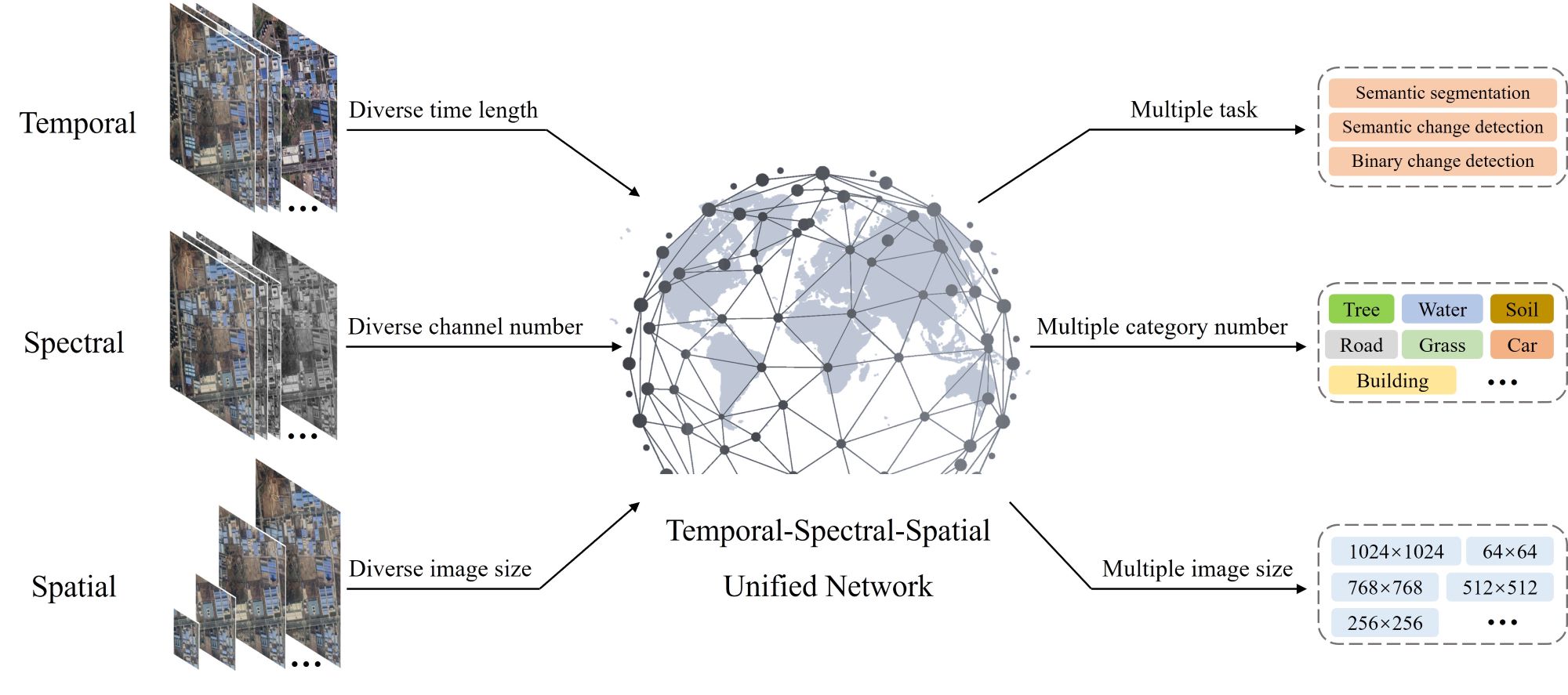
Temporal-Spectral-Spatial Unified Remote Sensing Dense Prediction
Sijie Zhao, Feng Liu, Xueliang Zhang†, Hao Chen†, Pengfeng Xiao, Lei Bai(† corresponding author)
arXiv 2025 Journal
This research introduces TSSUN, a novel deep learning model that unifies diverse remote sensing data and dense prediction tasks. It addresses data heterogeneity challenges by standardizing input/output, achieving state-of-the-art performance across various applications without task-specific modifications.

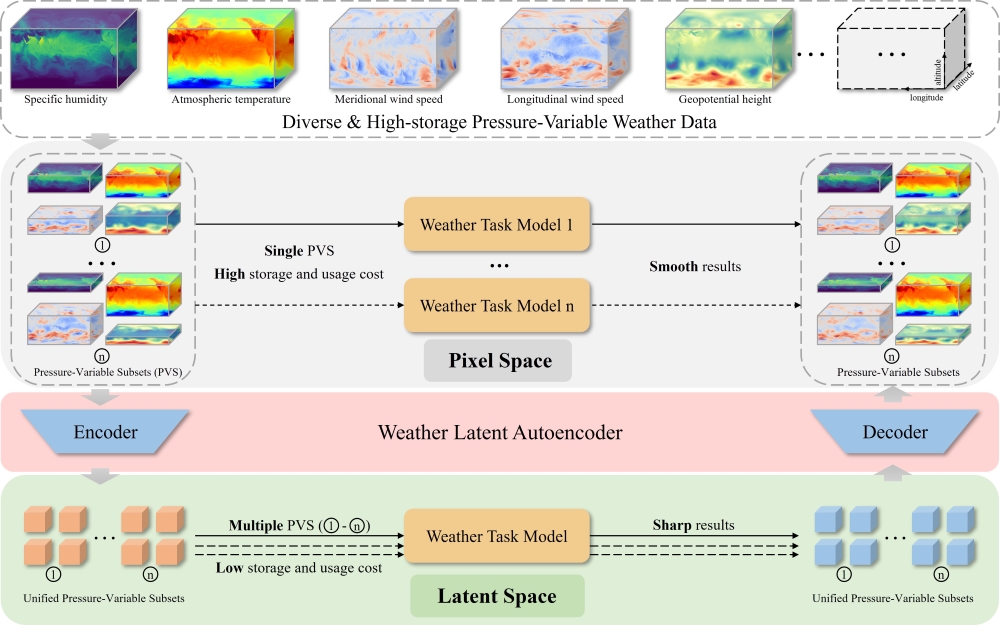
Transforming Weather Data from Pixel to Latent Space
Sijie Zhao, Feng Liu, Xueliang Zhang†, Hao Chen†, Tao Han, Junchao Gong, Ran Tao, Pengfeng Xiao, Xinyu Gu, Lei Bai, Wanli Ouyang(† corresponding author)
arXiv 2025 Conference
This research introduces WLA, a novel deep learning model that compresses massive weather datasets into a compact latent space. This innovation significantly reduces data storage and computational costs, while improving the accuracy and adaptability of weather task models across diverse scenarios.

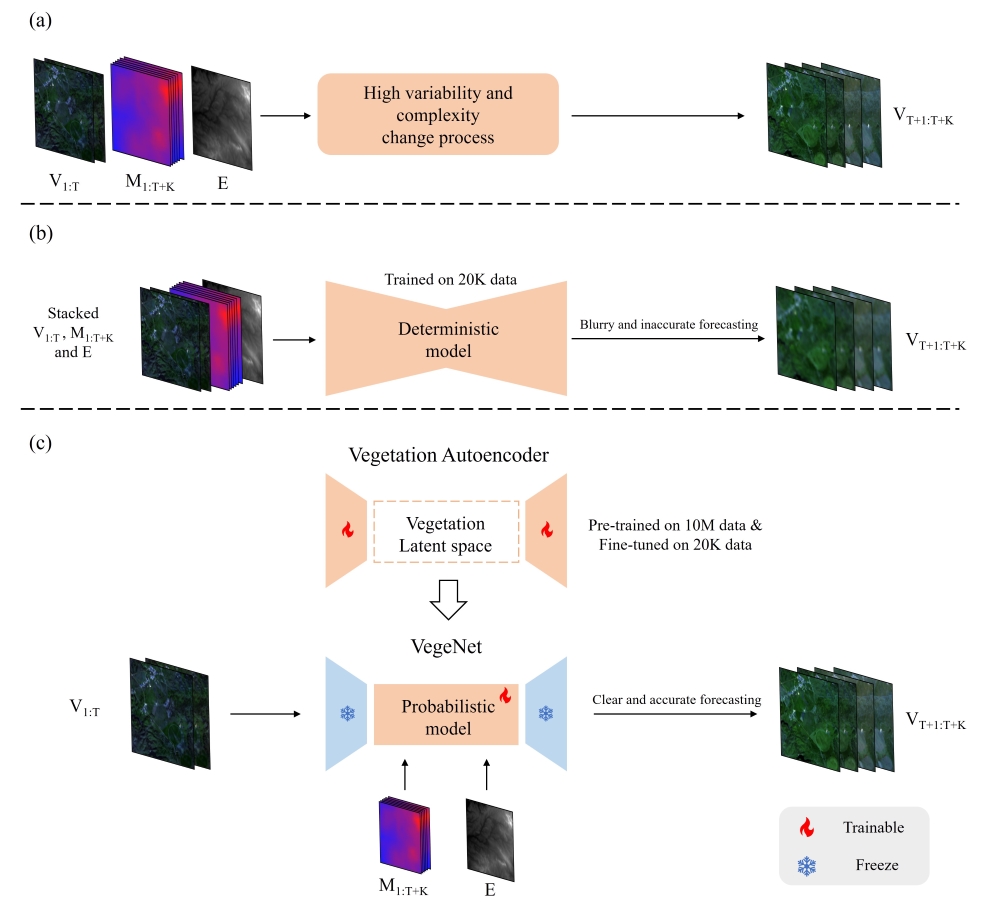
VegeDiff:Latent Diffusion Model for Geospatial Vegetation Forecasting
Sijie Zhao, Hao Chen†, Xueliang Zhang†, Pengfeng Xiao, Lei Bai, Wanli Ouyang(† corresponding author)
IEEE Transactions on Geoscience and Remote Sensing (TGRS, SCI Q1 TOP, IF=8.3) 2025 Journal
This research introduces VegeDiff to forecast future vegetation states by employing a novel diffusion model to probabilistically capture uncertainties in vegetation change. It accurately models dynamic meteorological and static environmental impacts, providing clear, precise predictions, outperforming existing deterministic methods.

2024
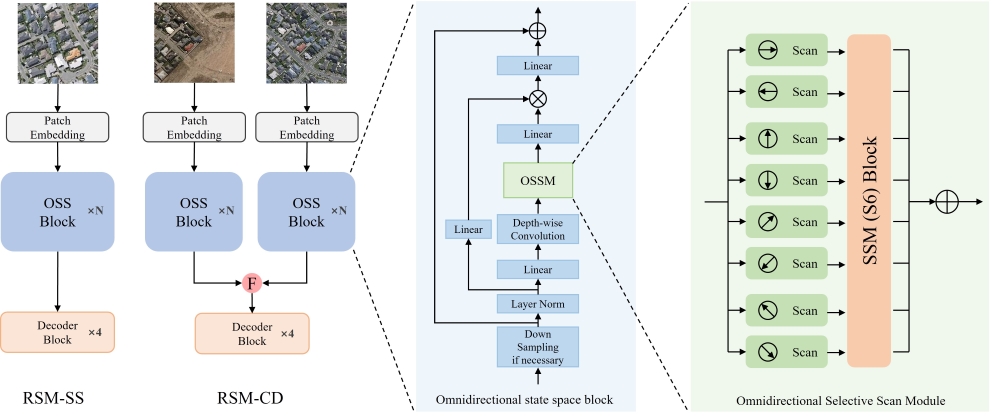
RS-Mamba for Large Remote Sensing Image Dense Prediction
Sijie Zhao, Hao Chen†, Xueliang Zhang†, Pengfeng Xiao, Lei Bai, Wanli Ouyang(† corresponding author)
IEEE Transactions on Geoscience and Remote Sensing (TGRS, SCI Q1 TOP, IF=8.3) 2024 Journal
This research introduces Remote Sensing Mamba (RSM) to efficiently model global context in large remote sensing images. RSM overcomes the quadratic complexity of transformers by using an omnidirectional selective scan, achieving state-of-the-art dense prediction performance on VHR images.

2023
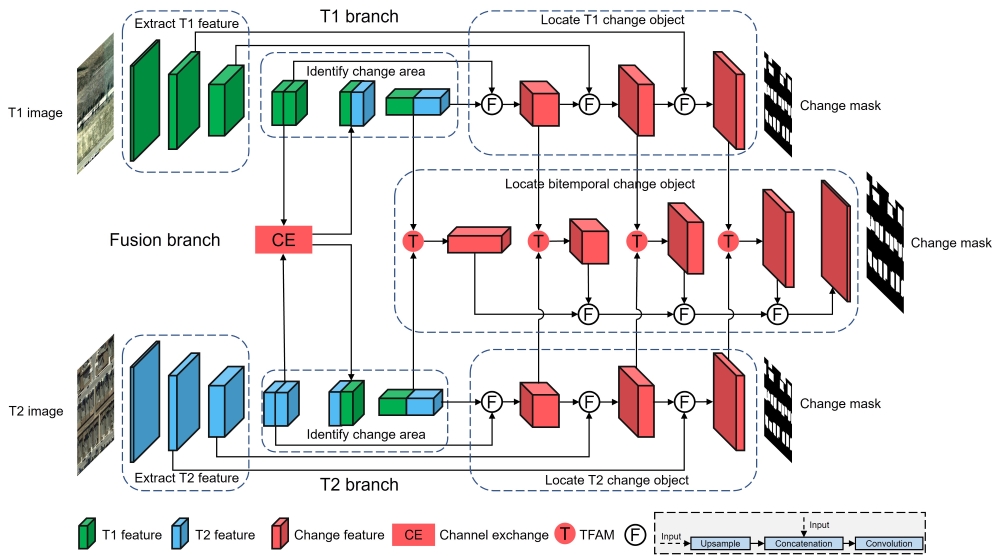
Exchanging dual-encoder–decoder:A new strategy for change detection with semantic guidance and spatial localization
Sijie Zhao, Hao Chen†, Xueliang Zhang†, Pengfeng Xiao(† corresponding author)
IEEE Transactions on Geoscience and Remote Sensing (TGRS, SCI Q1 TOP, IF=8.3) 2023 Journal
This research introduces a novel exchanging dual encoder-decoder structure for binary change detection. It addresses limitations of existing methods by fusing bitemporal features at the decision level and leveraging bitemporal semantic features. The proposed model achieves superior performance and high efficiency across various change detection scenarios.
